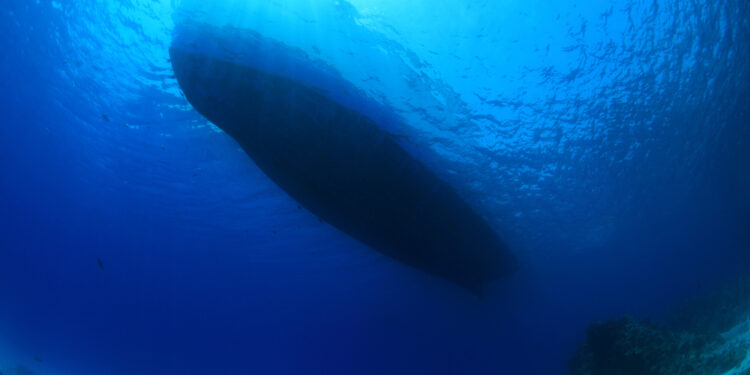A minimum under keel clearance is one of the major factors required to provide safe passage for a vessel as it helps mariners avoid ship grounding, especially in challenging navigation conditions such as in narrow channels. But what does this technical term exactly refer to?
In simple terms, under keel clearance is the vertical distance between the bottom of the ship and the seabed. As the seabed is a complex surface that is likely to differ in depth at all points across the ship hull, that clearance should be sufficient to allow ship’s floatability in most unfavorable weather conditions. Maintaining the vertical distance between the ship’s hull and the ocean floor keeps the keel free of the seabed and reduces the chances of running aground.
UKC is assessed taking into account numerous factors, including a vessel’s size, draught and nature of cargo. Many ports use whichever is the greater of a defined figure or 10% of a vessel’s draught as the minimum under keel clearance. Despite the application of minimum UKC, there are additional precautions to be taken in cases of shallow waters, to minimize the risk of grounding, including closing watertight doors, increasing bridge manning, and providing tug assistance for larger vessels.
Managing Under keel clearance
A UKC management plan is a complex topic including many aspects. The UKC is calculated for each leg of the voyage, as well as for both arrival and departure at each port. Both Masters and ports must be satisfied that there is sufficient UKC according to their ship- and port-specific calculations. Calculating the UKC takes account of a number of variables, such as:
- depths through the waterway;
- tide height per location;
- ship forward and aft draughts on entering the waterway;
- Wave response allowance;
- the speed of the ship;
- accuracy of hydrographic data;
- change of water density;
- potential obstructions (e.g., pipelines, etc.);
- the squat.
A critical factor in every case is the Masters’ knowledge of the behaviour of their ships, which should be a main part of the decision-making process and especially important in ‘unusual’ environmental conditions.
Let’s familiarize with key terms linked to UKC:
- Squat: A major aspect of under keel clearance: A key term often seen along UKC is squat, a hydrodynamic phenomenon that can change the ship’s draught unexpectedly. Squat is the decrease in ship’s under keel clearance due to vessel’s movement in the shallow water. This pattern changes according to the speed of the ship. Under the squat effect, a ship moving quickly in shallow water creates an area of lowered pressure, shifting the ship closer to the seabed than would otherwise be expected. This is why there have been many groundings attributed to squat. To calculate the squat, you can use maths, but to understand why the squat occurs is a bit more complicated. Just keep in mind that squat increases as the speed increases in the water, which is not the case for the ground.
- The Bernoulli equation: In simple words, this theory says that water is moving faster under the ship in shallow waters. When the flow speed is high, the pressure is low, and vice versa. In shallow water, the presence of the ship and seabed accelerates the flow, decreasing the pressure on the ship and pulling it downwards.
- Roll, heave and pitch: Waves produce pitching motions which can make the bow or stern vulnerable to grounding. The ship’s centre of gravity also moves up and down, which is the heave motion. Even slight movement by sea swell can deepen the draught by many metres. This can be particularly important when entering a port across a shallow bar, where an ocean swell is present.
 A famous maritime disaster linked to UKC was the sinking of Herald of Free Enterprise in 1987. Squat effect reportedly played a key role in the sinking of the Ro-Ro ship, only a few minutes after leaving the Belgian port of Zeebrugge with its inner and outer bow doors open, killing 193 people.
A famous maritime disaster linked to UKC was the sinking of Herald of Free Enterprise in 1987. Squat effect reportedly played a key role in the sinking of the Ro-Ro ship, only a few minutes after leaving the Belgian port of Zeebrugge with its inner and outer bow doors open, killing 193 people.
FIND FURTHER INFORMATION IN THIS DOCUMENT BY THE NAUTICAL INSTITUTE































































































































